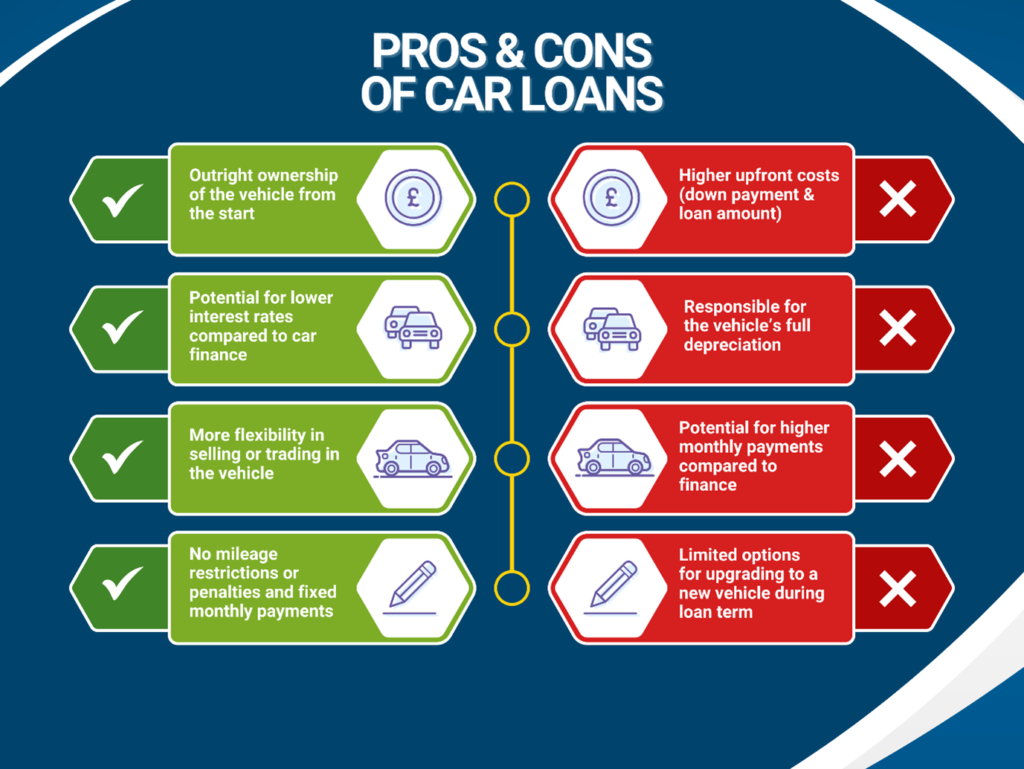When you’re ready to buy a car, one of the biggest decisions you’ll make isn’t just about the vehicle—it’s about how you’ll pay for it. In 2025, with the convenience of digital platforms and the traditional in-house financing of car dealerships, car buyers are faced with a big question: Should you get an auto loan online or through a dealership?
This article breaks down the pros and cons of online auto loans versus dealership financing, helping you make the smartest financial choice for your car-buying journey.

1. What Are Online Auto Loans?
Online auto loans are car loans offered through internet-based lenders, including banks, credit unions, fintech companies, and specialized auto finance platforms. You can compare rates, apply for pre-approval, and manage most of the loan process digitally.
Popular online lenders include:
- LightStream
- Capital One Auto Navigator
- Carvana
- LendingTree
2. What Is Dealership Financing?
Dealership financing refers to getting an auto loan directly through the car dealership. Dealers typically work with a network of lenders and handle the loan process for you. In some cases, they also offer in-house financing or manufacturer-backed promotional rates (like 0% APR for qualified buyers).
Pros of Online Auto Loans
a. Easier Rate Comparison
- You can compare interest rates and terms from multiple lenders with just a few clicks.
- Tools and aggregators help you see the best available deals.
b. Pre-Approval Before Shopping
- Getting pre-approved lets you know exactly how much you can borrow.
- Strengthens your position when negotiating the car price.
c. Transparent Loan Terms
- Online lenders often provide detailed loan breakdowns, making it easy to understand fees, rates, and payment schedules.
d. Speed and Convenience
- Apply and receive approval within minutes—without leaving your home.
- Manage the loan and documents electronically.
e. Potentially Lower Rates
- Many online lenders have lower overhead and may offer better rates than dealerships.
Cons of Online Auto Loans
a. No Personal Touch
- You won’t get face-to-face service if you prefer hands-on help.
b. Limited Assistance with the Vehicle Purchase
- You’re responsible for coordinating the financing and vehicle purchase yourself.
c. Credit Check Impact
- Pre-approval may involve a soft or hard credit pull depending on the lender.
d. May Not Include Dealer Incentives
- You might miss out on exclusive dealership or manufacturer promotions.
Pros of Dealership Financing
a. One-Stop Shopping
- Finance and purchase your car in the same place.
- Dealership handles all paperwork, making the process easier.
b. Access to Manufacturer Promotions
- Special rates like 0% APR, cashback, or loyalty bonuses.
- Some deals are only available through manufacturer financing.
c. Easier Approval for Bad Credit
- Dealerships may have flexible lending networks and relationships with subprime lenders.
- Easier for first-time buyers or those with limited credit history.
d. Trade-In Integration
- Easier to roll a trade-in vehicle or down payment into your financing package.
Cons of Dealership Financing
a. Higher Interest Rates
- Dealerships often mark up the interest rate from the lender to increase their profit.
- You may pay more than if you shopped around.
b. Pressure Tactics
- Sales staff may pressure you into taking a loan that benefits them more than you.
- Add-ons and extras like warranties and insurance can be bundled without clear explanation.
c. Less Transparency
- Dealership contracts may hide fees or use unclear language.
- Harder to compare options side-by-side.
d. Limited Lender Choices
- You’re restricted to the dealers’ preferred lenders, which may not offer the best terms.
Online Loans vs. Dealership Financing: Side-by-Side Comparison
| Feature | Online Auto Loans | Dealership Financing |
|---|---|---|
| Rate Shopping | Easy to compare multiple lenders | Limited to dealer’s options |
| Application Process | Quick and digital | Handled at dealership |
| Pre-Approval | Common and fast | Not always available |
| Promotional Offers | Rare | Frequent (0% APR, cash back) |
| Transparency | High | Often limited |
| Credit Flexibility | Moderate | High (especially for bad credit) |
| Convenience | High (remote process) | High (one-stop shopping) |
What’s Better in 2025? It Depends on Your Situation
Choose an Online Auto Loan If:
- You have good to excellent credit.
- You want to compare multiple offers quickly.
- You value transparency and low pressure.
- You want to be pre-approved before going to the dealership.
Choose Dealership Financing If:
- You qualify for a manufacturer incentive (e.g., 0% APR).
- You need help with paperwork or trade-ins.
- You have bad or limited credit and want more flexible approval.
- You prefer to handle everything in one place.
How to Maximize Savings, Regardless of Where You Finance
1. Check Your Credit First
- Know your score and take steps to improve it before applying.
2. Use an Auto Loan Calculator
- Compare total loan cost, not just monthly payments.
3. Get Multiple Offers
- Whether online or at a dealership, don’t settle for the first quote.
4. Negotiate Separately
- Negotiate the car price and the loan terms separately to avoid bundling tactics.
5. Avoid Long Loan Terms
- Stick to 36–60 month terms to avoid paying more interest.
6. Make a Larger Down Payment
- Lower your total loan cost and reduce your risk of negative equity.
Conclusion: Smart Financing Makes a Smarter Purchase
In 2025, car buyers have more options than ever before. Online auto loans offer convenience, transparency, and competitive rates, while dealership financing provides bundled perks and access to promotions. The best option depends on your credit, preferences, and buying strategy.
Whatever route you choose, the key is to be informed, compare your options, and prioritize your long-term financial health. Don’t rush into a loan just because it’s easy—take the time to understand the terms and make the choice that saves you the most.